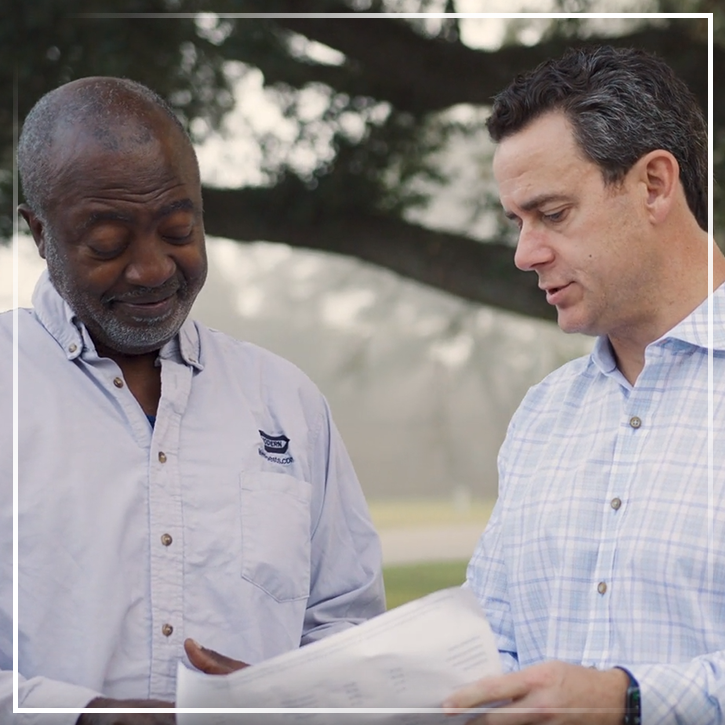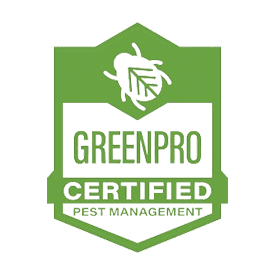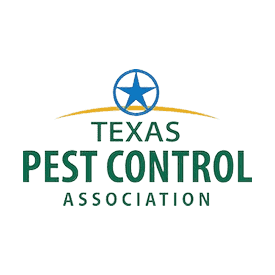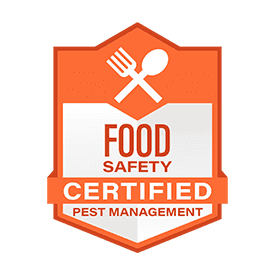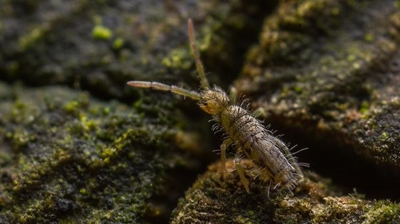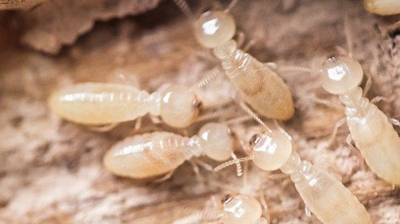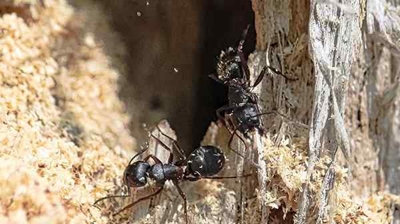
We have proudly served the Greater Houston Area for over 70 years and received an average rating of 4.9 out of 5 stars from over 1,100 Google reviews.


Recurring Service Plans
Keep Your Home Pest Free!
-
 Pest Control Starting at $35/Month
Pest Control Starting at $35/Month- Quarterly Pest Service
- Service Guarantee
- Year-Round Protection From Ants*, Roaches, Silverfish, Crickets, Millipedes, Pill Bugs, & Earwigs
- Fleas, Fire Ants, & Spiders** In The Yard
*Some Exclusions & Initial Enrollment Fee May Apply
-
 Pest & Termite Control Starting at $62/Month
Pest & Termite Control Starting at $62/Month- Quarterly Pest Service
- Service Guarantee
- Year-Round Protection From Ants*, Roaches, Silverfish, Crickets, Millipedes, Pill Bugs, & Earwigs
- Fleas, Fire Ants, & Spiders** In The Yard
- Termite Control Featuring The Sentricon System
*Some Exclusions & Initial Enrollment Fee May Apply
-
 Pest & Termite Control + Seasonal Mosquito Control Starting at $108/Month
Pest & Termite Control + Seasonal Mosquito Control Starting at $108/Month- Quarterly Pest Service
- Service Guarantee
- Year-Round Protection From Ants*, Roaches, Silverfish, Crickets, Millipedes, Pill Bugs, & Earwigs
- Fleas, Fire Ants, & Spiders** In The Yard
- Termite Control Featuring The Sentricon System
*Some Exclusions & Initial Enrollment Fee May Apply
* Excludes crazy ants and carpenter ants ** Spider reduction around a home is a constant process. Our technician will pay special attention to areas where spiders congregate and harbor. However, certain factors such as outdoor lighting, insect pressure, areas of high moisture, debris around the structure, and other conducive conditions can create challenges for spider reduction.
Featured SERVICES
How Can We Help You?
A Modern Approach to Pest Control in Katy, TX
Pest Control Around Houston, TX
We're the best pest control company in Katy with over 1,000 five star reviews. We're a family owned exterminator that's been providing pest control services in the Katy and Greater Houston area for over 70 years.
How Can Modern Pest Control Help?
If you find yourself dealing with pests in your Greater Houston area home or business, you've come to the right place! Using the latest pest control strategies and methods in Katy, TX, the team here at Modern Pest Control works to solve local pest problems efficiently and effectively. Whether you're dealing with ants in your kitchen, mosquitoes swarming in your backyard, or termites eating away at the structural wood or your home or business, we can help!
Check out our most popular pest control services below or give our Houston pest control company a call at (281) 214-8066!
FAQ About Pest Control in Houston
Explore the benefits of a pest-free space with our complimentary inspections. Contact us now to schedule your inspection and take the first step toward a pest-proof home.
A Pest control company Proudly Serving The Greater Houston Area Since 1952
Founded back in 1952, Modern Pest Control is a Houston pest control company that has been working to eliminate pests from local homes and businesses for over 70 years. At Modern, we offer effective pest control services in Houston, Cypress, Sugar Land, Katy, and the surrounding area to help protect our neighbors and community from pest threats.


Why Choose Modern Pest Control?
Trusted for a Reason
-
Customer-Focused Approach
With a focus on customer satisfaction, we boast over 1000 5-star Google reviews, offer free inspections, maintain consistency by assigning the same technician whenever possible, and provide flexible scheduling options, ensuring an easy and customer-friendly service experience.
-
Industry Leadership and Involvement
We actively participate in national and Texas pest control associations and are accredited by Quality Pro demonstrating our commitment to industry standards, professionalism, and food safety.
-
Values Centered Around Community
Dedicated to community welfare for over 70 years, our third-generation family-owned business actively engages in philanthropy and community service, fostering a sense of responsibility beyond pest control.
-
Commitment to Integrated Pest Management
Providing sustainable and eco-friendly pest control solutions, prioritizing integrated pest management practices to ensure effective results with minimal environmental impact.
Our Customers Love Us!
Read Reviews from Your Friends and Neighbors
We received an average rating of 4.9 out of 5 stars from over 1,100 Google reviews.
-
"On-Time & Professional Service"Our tech was very professional, and courteous, and explained what he was going to do!- Gerald R.
-
"Great Customer Service"I want to give a shout-out to both Michelle, who works in the office, and Alex Guzman, an onsite technician, both were AWESOME!!- Cindy G.
-
"Long-Time Customer"We have used Modern Pest Control for many years with good results. Other relatives, as well, for over several decades with similar results.- Ken A.
-
"Friendly and Helpful"This is my second time using their service and thoroughly satisfied with the entire process.- Devina P.
-
"Always 5-Star Service!"We have used Modern Pest for the last four years. Our technician, Donnie, offers phenomenal service!- Lesley L.
-
"Great Work!"I am really happy with this company and their service. They do get the job done and are nice.- Stela D.
-
"Happy Customer!"I have had the rodent exclusion service from Modern Pest Control for over 3 years. They are always professional and responsive.- Andre G.
-
"Respectful & Knowledgeable Techs"I have a lot of confidence in Modern Pest Control taking care of my property!- Anthony F.
